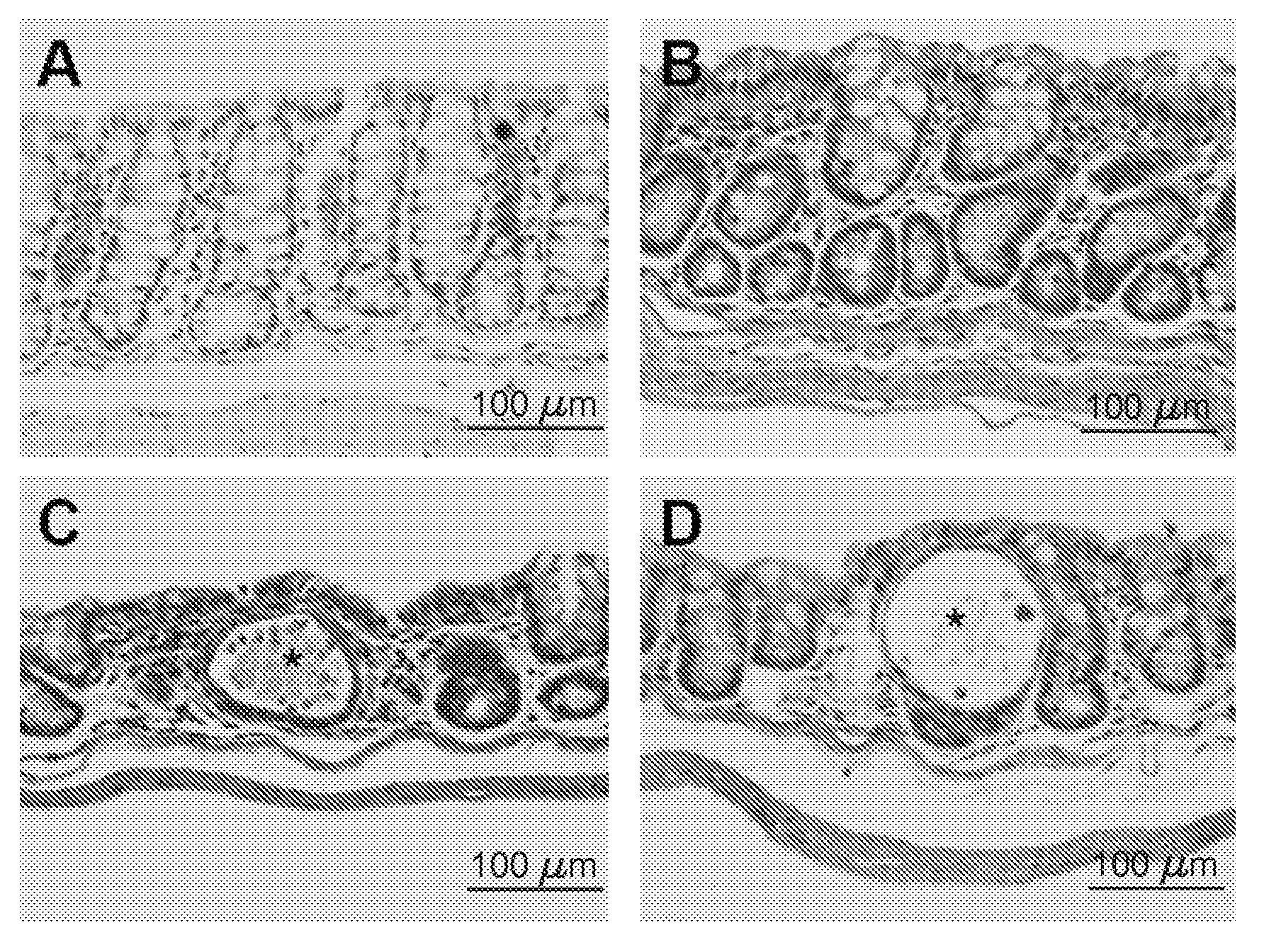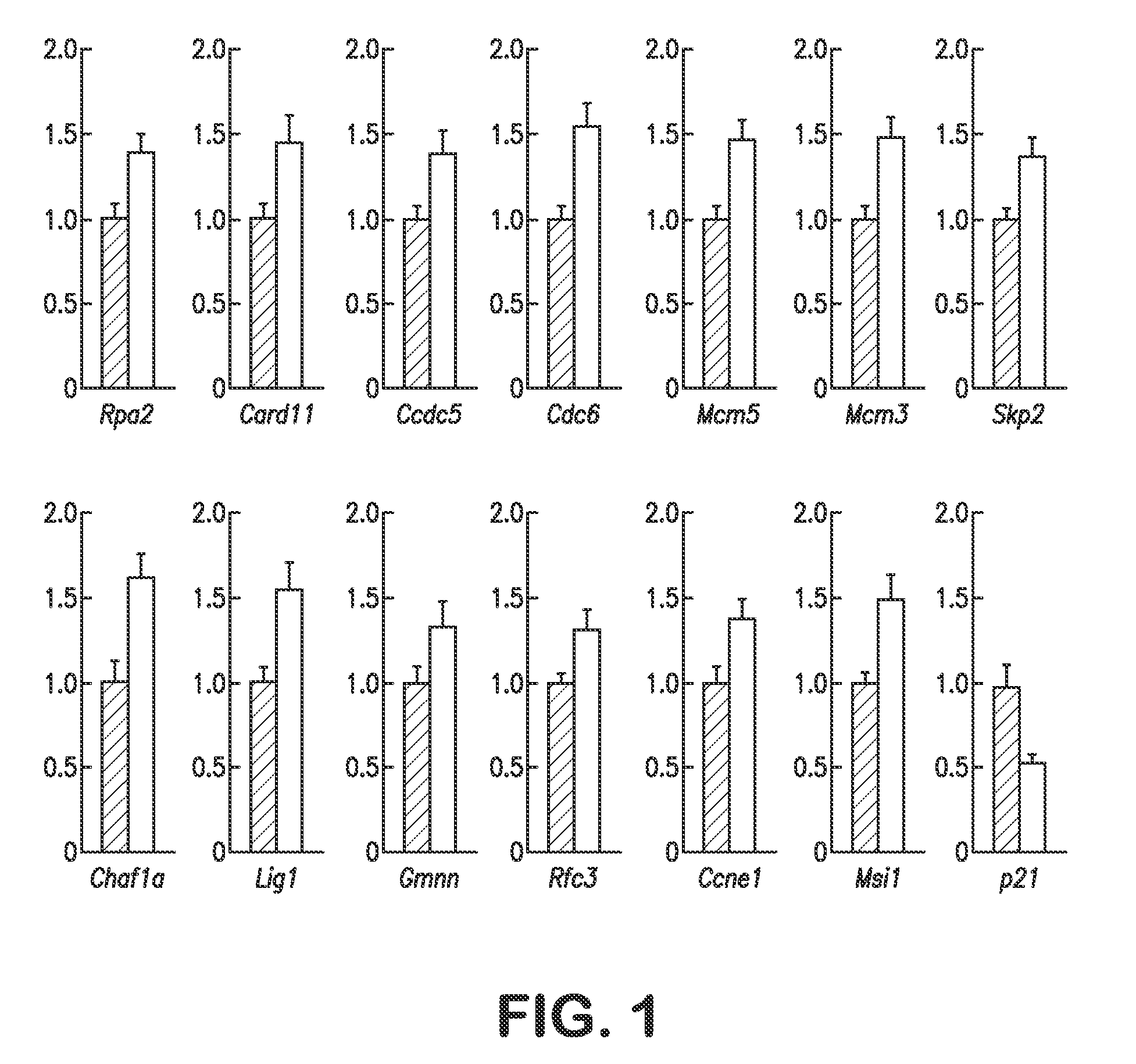Cancer Chemoprevention Strategy Based on Loss of Imprinting of IGF2
a chemoprevention and tumor technology, applied in the field of cancer, can solve the problems of increasing tumor risk and cancer remains mysterious, and achieve the effect of reducing the sensitivity of signal transduction
- Summary
- Abstract
- Description
- Claims
- Application Information
AI Technical Summary
Benefits of technology
Problems solved by technology
Method used
Image
Examples
example 1
In Vitro Confirmation of the Proliferative Effect of IGF2 LOI(+) on Progenitor Cells
[0133]It remained theoretically possible that the observed difference in gene expression simply reflected the over-representation of progenitor cells within the intestinal crypts, rather than a change in cellular gene expression per se. To confirm the latter, mouse embryonic stem (ES) cells were derived and plated in ESGRO Complete Clonal Grade defined medium (Chemicon), which contains no IGF2 and allows growth of undifferentiated ES cells without a feeder layer, which was done with or without 800 ng / ml of mouse Igf2 recombinant protein (StemCell Technologies). Consistent with the microarray experiments, Igf2 induced a 50% and 56% increase in Cdc6 gene expression at 3 and 6 hours, respectively, and 40% and 25% at 10 and 24 hours, respectively (FIG. 3). Similar results were observed for Mcm5 (FIG. 3). To confirm the specificity of this effect, these experiments were repeated by blocking IGF2 signaling...
example 2
Specific Inhibition of Aberrant Crypt Foci in LOI(+) Mice by an Inhibitor of Igf1R
[0136]Because of known strain variation in progression of these lesions, littermate controls were treated with and without LOI, in which the dams were heterozygous for a deletion of the H19 differentially methylated region (DMR); inheritance of a maternal allele lacking the DMR leads to activation of the normally silent allele of Igf2 [LOI(+)], while inheritance of a wild type maternal allele leads to normal imprinting [LOI(−)]. Eight LOI(+) and 14 LOI(−) mice were given AOM intraperitoneally weekly for 3 weeks, sacrificed at 5 weeks after the first dose, and ACF were scored by the method of Bird (1987). Histologic examination of colons from AOM-treated mice confirmed the presence of ACF, with hyperproliferative features including increased mitosis, crypt enlargement and crypt disarray (FIG. 12). These results are consistent with the proliferation-specific changes in gene expression described above. An...
example 3
LOI Causes Long Term Potentiation of Akt Signaling in Response to Igf2
[0139]To determine whether cells from LOI(+) mice themselves differed in IGF2 sensitivity, a novel high throughput signal transduction assay was developed based on an immunostaining automation device comprising microfluidic chambers housing multiple cells (Wang et al., in 10th International Conference on Miniaturized Systems for Chemistry and Life Sciences (MicroTAS2006) (Tokyo, Japan, 2006). An advantage of the microfluidic chip is that all the cells can be cultured simultaneously on the same chip and under identical conditions, with exquisite control of the cell medium over the time of the experiment and subsequent analysis, allowing a much larger number of measurements than would be possible by conventional means. The device was constructed within a monolithic 2-layer PDMS chip sealed with a glass coverslip, with defined media delivery controlled by a multiplexed system of valves. Akt / PKB, a known and well char...
PUM
| Property | Measurement | Unit |
|---|---|---|
| Temperature | aaaaa | aaaaa |
| Volume | aaaaa | aaaaa |
| Volume | aaaaa | aaaaa |
Abstract
Description
Claims
Application Information
 Login to View More
Login to View More - R&D
- Intellectual Property
- Life Sciences
- Materials
- Tech Scout
- Unparalleled Data Quality
- Higher Quality Content
- 60% Fewer Hallucinations
Browse by: Latest US Patents, China's latest patents, Technical Efficacy Thesaurus, Application Domain, Technology Topic, Popular Technical Reports.
© 2025 PatSnap. All rights reserved.Legal|Privacy policy|Modern Slavery Act Transparency Statement|Sitemap|About US| Contact US: help@patsnap.com



